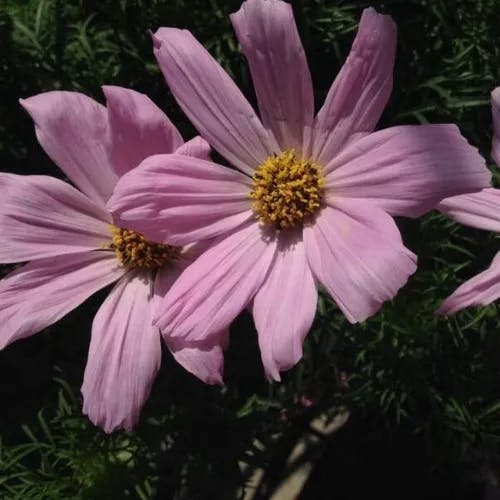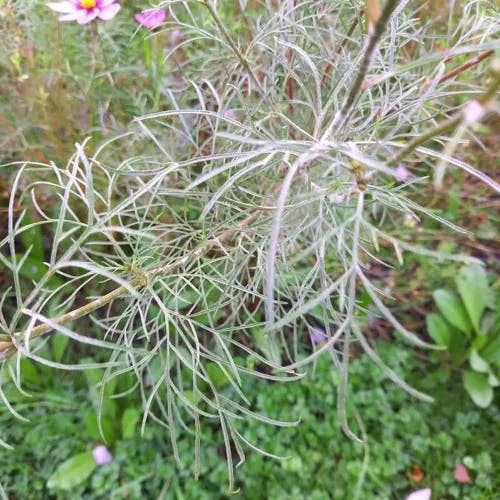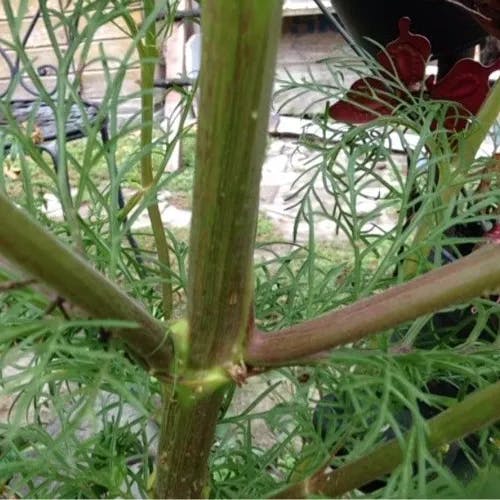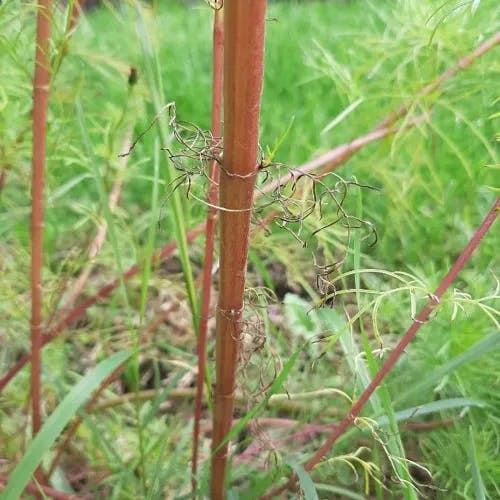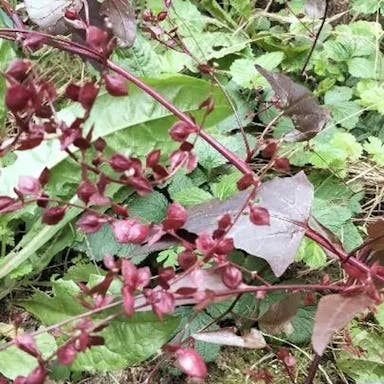Cosmos bipinnatus, commonly known as Garden cosmos, is a medium-sized flowering herbaceous plant native to Mexico. The plant typically grows to a height of 2-4 feet, with some varieties reaching up to 7 feet. It is characterized by its finely cut, feathery leaves and showy daisy-like flowers that bloom from midsummer to frost. The flowers of Cosmos bipinnatus come in a variety of colors, including white, pink, and shades of red and purple. They are usually 2-4 inches in diameter, with a ring of broad ray florets and a center of disc florets. The plant produces a fruit called an achene, which is a small, dry, one-seeded fruit that does not open to release the seed. Cosmos bipinnatus is an annual plant, meaning it completes its life cycle in one year. It is known for its ease of growing and is often used in gardens for its attractive flowers and ability to attract butterflies. The plant prefers full sun and well-drained soil but is tolerant of poor soil conditions. In the language of flowers, Cosmos bipinnatus symbolizes order, peace, and serenity, reflecting its harmonious, balanced petals. The plant has several varieties, including 'Sensation', which has large flowers on tall stems, and 'Sonata', which is a dwarf variety suitable for containers. Despite its ornamental value, Cosmos bipinnatus is also considered an invasive species in some regions due to its ability to self-seed and spread rapidly. Therefore, it is recommended to monitor its growth and remove any unwanted seedlings promptly.
0
0
